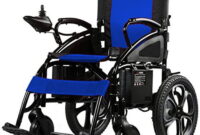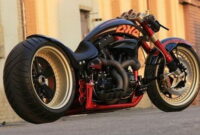Shells For Pickup Trucks: Unlocking Your Truck’s Full Potential pickup.truckstrend.com
Pickup trucks are the workhorses of the automotive world, renowned for their versatility, power, and open cargo beds. However, that open bed, while excellent for hauling large, uncouth items, leaves valuable cargo exposed to the elements, theft, and prying eyes. This is where Shells For Pickup Trucks — also known as truck caps, truck toppers, or camper shells — come into play. Far more than just a cover, a truck shell transforms your pickup’s bed into a secure, weather-protected, and highly versatile enclosed space, dramatically expanding its utility for work, recreation, and everyday life.
From contractors needing a mobile workshop to adventurers seeking a comfortable sleeping quarter, and from families wanting secure luggage transport to everyday drivers looking for organized storage, truck shells offer a tailored solution. They bridge the gap between a simple pickup and a more enclosed vehicle, providing an unparalleled blend of security, protection, and enhanced functionality that an open bed simply cannot match.
Shells For Pickup Trucks: Unlocking Your Truck’s Full Potential
Understanding Truck Shells: More Than Just a Cover
At its core, a truck shell is a rigid or semi-rigid enclosure that fits over the bed of a pickup truck, essentially creating a covered, secure compartment. While the terms "truck cap," "topper," "canopy," and "shell" are often used interchangeably, they all refer to the same fundamental concept: converting the open bed into a sealed space.
The primary benefits of installing a truck shell include:
- Superior Cargo Protection: Shielding your gear, tools, groceries, or luggage from rain, snow, dust, and UV rays.
- Enhanced Security: With lockable doors and windows, a shell deters theft, keeping your valuables safe and out of sight.
- Increased Storage Volume: Unlike flat tonneau covers, shells provide vertical space, allowing for much larger items to be transported securely.
- Improved Aerodynamics (Potential): A well-designed shell can smooth the airflow over the truck bed, potentially leading to marginal improvements in fuel efficiency, especially at highway speeds.
- Versatility: Transforms your truck into a mobile workshop, a comfortable camper, or an organized hauler.
- Aesthetics: Many shells are designed to complement the truck’s lines, often paint-matched to create a seamless, integrated look.

Types of Truck Shells: Finding Your Perfect Match
The market for truck shells is diverse, offering a range of materials, designs, and features to suit various needs and budgets.

By Material:
-
Fiberglass Shells:
- Characteristics: Most popular choice. Durable, lightweight relative to its strength, and highly customizable. Can be molded into various shapes and seamlessly paint-matched to your truck’s color for an OEM look.
- Pros: Excellent aesthetics, good insulation, strong, wide range of features.
- Cons: Can be more expensive, heavier than aluminum in some cases, susceptible to cracking from severe impact.

-
Aluminum Shells:
- Characteristics: Often seen on work trucks due to their rugged, utilitarian appearance. Lighter than fiberglass counterparts of similar size.
- Pros: Extremely durable, lightweight, cost-effective for commercial applications, excellent for heavy-duty use.
- Cons: Less aesthetically refined (typically come in white or black, less customizability), can be noisier due to vibration.
-
ABS Plastic Shells:
- Characteristics: More economical option, lighter than fiberglass. Often used for basic protection.
- Pros: Affordable, lightweight, resistant to minor dents.
- Cons: Less durable than fiberglass or aluminum, fewer features, limited aesthetic options.
-
Canvas/Soft Toppers:
- Characteristics: While not rigid "shells," these are worth mentioning as they offer flexible, collapsible coverage. Made from durable fabric over a frame.
- Pros: Very lightweight, easy to remove/store, highly portable, more affordable.
- Cons: Less secure, minimal insulation, not as weather-tight, limited cargo protection from impacts.
By Design/Functionality:
- Cab-High Shells: Designed to match the height of the truck’s cab. They offer a sleek, integrated look and maintain rear visibility relatively well. Most common for general use.
- Mid-Rise/High-Rise Shells: Extend above the cab, providing significantly more internal cargo volume. Ideal for those who need to transport taller items, or for camping/overlanding setups where headroom is desired.
- Commercial/Workman Shells: Built for heavy-duty use, often made from aluminum with reinforced frames. Feature side access doors, shelving, toolboxes, and ladder racks. Designed for contractors, tradespeople, and mobile service providers.
- Custom/Specialty Shells: Niche designs for specific purposes, such as dog transport (with specialized ventilation), or highly customized overland setups with integrated power systems and storage solutions.
Key Considerations When Choosing a Truck Shell
Selecting the right truck shell is a significant investment that requires careful thought.
- Truck Compatibility: This is paramount. Shells are designed specifically for the make, model, bed length, and year of your truck. A shell for a Ford F-150 will not fit a Chevy Silverado, and even within the same model, bed lengths (5.5 ft, 6.5 ft, 8 ft) vary.
- Primary Use:
- Work/Commercial: Focus on durability (aluminum), side access, shelving, and ladder racks.
- Camping/Overlanding: Prioritize internal volume (high-rise), ventilation, roof racks for additional gear, and potentially interior lighting/power.
- General Use/Aesthetics: Fiberglass, cab-high, paint-matched, with good window options.
- Budget: Prices vary wildly. Set a realistic budget before you start looking.
- Desired Features:
- Windows: Sliding (for ventilation), pop-out (for easy cleaning), or solid (for security/privacy).
- Ventilation: Essential for campers or those transporting pets.
- Interior Lighting: Battery-powered or wired into the truck’s electrical system.
- Roof Racks: For carrying bikes, kayaks, lumber, or roof-top tents.
- Carpeted Headliner: Provides insulation, reduces noise, and gives a finished look.
- Power Outlets: USB ports or 12V outlets for charging devices.
- Remote Locking: Integrated with your truck’s key fob.
- Installation Method: Decide if you’ll tackle it yourself or opt for professional installation.
- Weight and Payload: Consider the shell’s weight and how it impacts your truck’s payload capacity. While most modern trucks can handle a shell’s weight easily, it’s a factor if you’re already maxing out your payload with other gear.
Installation and Maintenance
Installation:
- Pre-Installation: Ensure your truck bed rails are clean and free of debris. If you have an aftermarket bed liner, ensure it doesn’t interfere with the shell’s fit. Some liners may need trimming.
- The Process: Truck shells are heavy and awkward. Professional installation is highly recommended. It typically involves:
- Lifting: Safely lifting the shell onto the truck bed. This usually requires multiple people or specialized equipment.
- Positioning: Aligning the shell perfectly with the bed rails.
- Clamping: Securing the shell to the bed rails using C-clamps or J-hooks.
- Sealing: Applying weather stripping or butyl tape to ensure a watertight seal between the shell and the truck bed.
- Wiring: Connecting any electrical components (interior light, third brake light) to the truck’s wiring harness.
- DIY vs. Professional:
- DIY: Possible with proper tools, help, and research. Saves money but risks improper sealing, damage, or injury.
- Professional: Ensures correct fit, proper sealing, and safe wiring. Dealers often offer warranties on installation.
Maintenance Tips:
- Regular Cleaning: Wash the exterior regularly to protect the finish, especially if paint-matched fiberglass.
- Check Seals: Periodically inspect the weather seals around the base, windows, and doors. Replace them if they show signs of cracking or wear to prevent leaks.
- Hinge and Latch Lubrication: Lubricate hinges and latches annually to ensure smooth operation and prevent corrosion.
- Gas Strut Inspection: The gas struts that hold the rear door open can lose pressure over time. Replace them if they no longer hold the door up securely.
- Hardware Check: Periodically check and tighten all mounting clamps and bolts.
Benefits Beyond Protection: Maximizing Your Truck’s Potential
A truck shell unlocks a new realm of possibilities for your pickup:
- Enhanced Security: Your tools, luggage, camping gear, or even groceries are safely out of sight and locked away, significantly reducing the risk of theft compared to an open bed.
- Weather Protection: No more soggy sleeping bags or rusty tools. Everything inside stays dry and clean, regardless of the weather outside.
- Camping and Overlanding: Transform your truck bed into a comfortable, secure sleeping area. Add a mattress, some interior lighting, and you have a mobile base camp. Many shells are designed to support rooftop tents, further expanding your camping capabilities.
- Mobile Workshop/Storage: For tradespeople, a shell with side access doors, shelving, and drawers turns your truck into an organized, weather-protected mobile workshop, keeping tools secure and accessible.
- Pet Transportation: With proper ventilation and secure tie-downs, a shell can provide a safe and comfortable space for transporting pets, especially on long journeys.
- Improved Resale Value: A well-maintained, high-quality truck shell can be an attractive selling point for your truck, adding to its overall value.
Potential Challenges and Solutions
While truck shells offer immense benefits, there are a few considerations:
- Reduced Rear Visibility: The rear window of the shell, especially with dark tint, can reduce visibility through your truck’s rearview mirror.
- Solution: Utilize side mirrors effectively, consider adding a rear-view camera if your truck doesn’t have one, or opt for shells with larger, clearer windows.
- Limited Bed Access: Reaching items at the very front of the truck bed can become more challenging with a shell installed.
- Solution: Consider shells with side access doors or invest in a truck bed slide-out tray for easy access to all your gear.
- Weight and Removal: Shells are heavy. Removing and re-installing them typically requires multiple people, a hoist, or specialized equipment.
- Solution: If frequent removal is necessary, consider a lighter aluminum shell or a soft topper. Otherwise, plan for assistance or professional help.
- Initial Cost: A quality truck shell represents a significant upfront investment.
- Solution: Consider your needs and budget carefully. View it as an investment that enhances your truck’s functionality and protects your assets.
Practical Advice and Actionable Insights
- Measure Twice, Order Once: Absolutely confirm your truck’s make, model, year, and precise bed length before ordering a shell. Errors here are costly.
- Prioritize Needs Over Wants: List your absolute must-have features first. Then, if budget allows, add desirable but non-essential features.
- Don’t Skimp on Installation: While DIY is possible, professional installation ensures proper fit, sealing, and wiring, preventing future headaches like leaks or electrical issues.
- Research Local Dealers: Look for reputable dealers in your area. They can offer expert advice, show you options, and handle professional installation. Check reviews.
- Consider Resale Value (of the Shell): If you might sell your truck and shell separately in the future, a popular color (like white or black) and common size may have better resale potential.
Estimated Price Range for Truck Shells (2023/2024)
Prices for truck shells vary significantly based on material, brand, features, and region. The table below provides a general estimated range for new shells, excluding installation costs which can add $150-$500.
| Type/Material | Key Features | Estimated Price Range (USD) |
|---|---|---|
| Soft/Canvas Toppers | Lightweight, collapsible, basic weather protection, easy removal. | $300 – $800 |
| Basic Aluminum Toppers | Utilitarian, rugged, lightweight, typically white or black, few features. | $800 – $1,500 |
| Basic Fiberglass (Cab-High) | Entry-level fiberglass, often white, limited features, good aesthetics. | $1,500 – $2,500 |
| Mid-Rise/High-Rise Fiberglass | Increased internal volume, various window options, color-matched. | $2,200 – $3,500 |
| Commercial/Workman Aluminum | Heavy-duty, side access doors, shelving options, ladder racks. | $2,500 – $5,000+ |
| Premium Fiberglass (Cab-High) | Paint-matched, carpeted interior, LED lights, power outlets, roof rack options, remote lock. | $3,000 – $4,500 |
| Custom/Specialty Toppers | Highly specialized builds for specific needs (e.g., overland, dog). | $4,000 – $8,000+ |
Disclaimer: These are estimated ranges. Actual prices will vary based on manufacturer, specific model, added features, dealer markups, and geographic location. Installation costs are typically separate.
Frequently Asked Questions (FAQ)
Q1: What’s the difference between a truck cap, shell, and topper?
A1: Functionally, they are all the same: an enclosed cover for your pickup truck bed. The terms are used interchangeably depending on regional preferences or manufacturer branding.
Q2: Will a truck shell fit any truck?
A2: No. Truck shells are highly specific to the truck’s make, model, bed length, and often even the year range. The contours of the bed rails, the overall width, and the bed length must match perfectly for a secure and watertight fit.
Q3: Do truck shells improve fuel economy?
A3: Potentially, yes, but often minimally. A well-designed shell can reduce aerodynamic drag by smoothing the airflow over the truck bed, especially at highway speeds. However, the weight of the shell itself can offset some of these gains. Most owners report negligible changes.
Q4: How much do truck shells weigh?
A4: The weight varies significantly by material and size.
- Soft/Canvas: 30-70 lbs
- Aluminum: 100-200 lbs
- Fiberglass: 150-300+ lbs (depending on size and features)
Always check your truck’s payload capacity to ensure it can safely handle the shell’s weight plus your cargo.
Q5: Can I install a truck shell myself?
A5: Yes, it is possible for DIYers, especially with help. However, due to the weight and need for precise alignment and watertight sealing, professional installation is highly recommended to ensure proper fit, electrical connections, and prevent leaks or damage.
Q6: How do I secure items inside a shell?
A6: Most shells come with lockable rear doors. For internal security, you can use tie-down points within the bed, or invest in internal cargo management systems like sliding trays, drawers, or shelving units.
Q7: Are truck shells completely waterproof?
A7: High-quality shells, when properly installed and sealed, are designed to be highly weather-resistant and largely waterproof. However, no aftermarket accessory can guarantee 100% waterproofing over years of use, especially as seals age. Regular inspection and maintenance of seals are crucial.
Conclusion
Shells For Pickup Trucks are a transformative addition, elevating a standard pickup from a simple hauler to a multi-functional vehicle capable of handling diverse demands. Whether you’re a professional needing secure tool storage, an outdoor enthusiast seeking a mobile base camp, or a family looking for protected luggage space, there’s a truck shell designed to meet your needs. By understanding the various types, considering key features, and making informed choices regarding installation and maintenance, you can unlock your truck’s full potential, ensuring your cargo is safe, dry, and ready for whatever adventure or task lies ahead.



